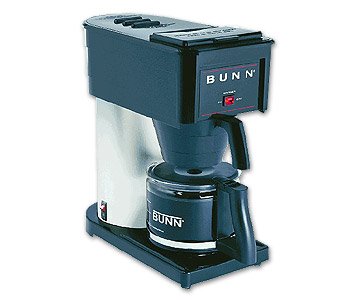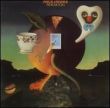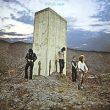| Taylor |
|
18 Feb 2009 19:37 | Quote |
Joined: 01 Jan 2009 United States  Lessons: 2 Karma: 1 
|
I'm trying to learn everything there is to know about tube amps and digital amps. I know I might not learn everything but, you know, I want to learn as much as I can. Is there anyone that can help me? Even the littlest bit of information will help and it'll be much appreciated. |
| RA |
|
18 Feb 2009 20:48 | Quote |
Joined: 24 Sep 2008 United States  Karma Karma: 16 
|
well, for sound they have a different timbre(through most amps have a different timbre from one another). the other difference is distortion which i like to view it in "toy story" style - tubes fail in style while solid-state just fails - meaning you can get a better distortion in tubes. and the opposite is true for solids they get better cleans. but this is all general and really depends on your likings of different timbers(meaning solids may get better cleans but if you hate the solids timbre then who cares go high power tubes). The main problem is that for all other amplification needs the goal is nice & clean, loud, and dynamic. while for instrumental needs we dig timbre as are main goal and makes us like out dated tech(tubes) that and to make matters worse the guitar is mainly a mid-range. to sum it up the goals for leading sound companies is completely different then the needs of the electrical guitarist.
the tech side i really don't know but I'll tell you what i do know there is three main tube parts(not actually number of tubes) to a tube amp the power tube, preamp tube, and rectifier tube(i read some were SRV only used solid rectifiers or his amp would blow up) and most so call tube amps aren't all tube one of the three parts maybe solid. and for solids there solid.
Phip knows what his talking about with this stuff and i think i remember Tele taking about it before too. see what they have to say.
-edit- for the distortion bit when pushed to complete fail there is no differences.
and that's the problem with solid-states they are clean or complete fail through amp makers have been trying to fix this problem for years so it not so much any more(so i have read) |
| Taylor |
|
18 Feb 2009 21:00 | Quote |
Joined: 01 Jan 2009 United States  Lessons: 2 Karma: 1 
|
thanks a lot. have you checked out the line 6 valve king? that amp is pretty much the main reason I'm trying to learn about all this. |
| RA |
|
18 Feb 2009 21:19 | Quote |
Joined: 24 Sep 2008 United States  Karma Karma: 16 
|
nah can't help you there sorry. i hate modeling amps with a passion and avoid them like the plague. and seeing most of line 6 amps are modeling(or the one in the shops) i don't play em.
but remember it is all about timbre so who cares what some grumpy people on the internet say now if you play to a crowd and they hate it then listen to em. |
| EMB5490 |
|
18 Feb 2009 22:10 | Quote |
Joined: 10 Feb 2008 United States  Lessons: 1 Licks: 1 Karma: 31 
|
ye basicly, ube amps sound better, more fragile, generally, louder. overall better besides price.
i hate line 6. hate.
do u mean the line 6, and the peavey valve king comparison? i didnt know ther as a line 6 valve king. anyway, most line 6s, ESPECIALLY the solid states suck. the tube amps arnt tht bad, still, i hate all the built in effects along with the 500 billion presets. lol. it takes away tone from the amp. |
| BodomBeachTerror |
|
18 Feb 2009 22:29 | Quote |
Joined: 27 May 2008 Canada  Lessons: 2 Licks: 1 Karma: 25 
|
having the effects built into the amp is good if you cant afford hundreds of dollars of pedals though |
| EMB5490 |
|
18 Feb 2009 22:39 | Quote |
Joined: 10 Feb 2008 United States  Lessons: 1 Licks: 1 Karma: 31 
|
true, but kills the tone. and u dont necessarily need all those effects. |
| Taylor |
|
20 Feb 2009 19:21 | Quote |
Joined: 01 Jan 2009 United States  Lessons: 2 Karma: 1 
|
anyone here know how a tube amp works? |
| foogered |
|
20 Feb 2009 20:01 | Quote |
Joined: 30 Apr 2008 United States  Lessons: 2 Licks: 11 Karma: 9 
|
A tube is just one way of amplifying a signal. It takes energy from a power source and uses it to increase the amplitude of a voltage without changing its shape. Solid-state amps use transistors to achieve this, which occupy less space and weigh less.
You won't hear too much difference in the tone of the two until the signal is overdriven. I'm not too sure how they function differently at this point though.
|
| Phip |
|
22 Feb 2009 07:21 | Quote |
Joined: 23 Dec 2007 United States  Lessons: 1 Karma: 45  Moderator Moderator
|
Good morning,
Just having my morning coffee and thought i'd take a stab at explaining the difference between tubes and transistors along with the difference between analog and digital.
Perhaps the way to start would be to explain the biggest difference between digital and analog.
Take a pencil and draw a nice round circle (maybe use a compass) Nice and round isn’t it? That is analog.
Now draw a circle on your computer and blow it up. See how it’s made? It is made up of squares and no matter how hard you try you can never make a circle out of squares. You can come close but…………….. That is digital.
Digital processing is achieved by using 1’s and 0’s (on or off) (high or low). It is very simple logic and easy to use but you can never truly enter the world of analog (natural) shapes and sounds by using such a rigid language. And that is why musicians like analog so much. The natural world of sounds that we live in is made up of tones and notes that are curved and rounded (in some cases) and simply can not be reproduced by converting these shapes into squares with sharp edges. Analog processing reproduces the original shape without converting that shape into squares. It keeps the roundness of natural sounds.
It’s that simple.
Now I’ll try to explain the difference between tubes and transistors (semiconductors).
Before the invention of the transistor there were tubes. The British call them “valves” and that is perhaps a better description since a tube acts very much like a valve.
Go to the kitchen sink and turn on the faucet. Water comes out. Now ask for more water by turning up the valve. More water comes out until you reach the limit of the plumbing in your home. The pipes in your home have a limit as to how much water they can deliver to the faucet. At this point if you want more water you are going to have to buy bigger pipes! This is how a tube works. This is also how a transistor works. The difference is what happens when you push the tube or transistor to its limit. There is a limit to all tubes and transistors as to how much they can amplify a signal. When you start to reach the limit of any tube or transistor you are approaching “saturation”. The tube or transistor starts to break down (distortion). When a transistor reaches saturation it tends to flatten out or “level off” the signal, but when a tube reaches saturation it tends to do strange things depending upon the characteristics of its design. This is the primary difference between tubes and transistors and the reason why musicians like the “effects” of tube amps. A musician can create interesting effects by driving the tube into saturation that he/she can not achieve with a transistor.
An important point.
Analog devices (like amplifiers) can and are made with transistors OR tubes. You should not confuse the word transistor with the word digital. Just because a device is made with transistors does not automatically mean it is digital. And to be exact you should not leap to the conclusion that just because something is made from tubes that it is analog. Indeed the very first digital computers were made with tubes although it was very impractical and really does not apply to the world of electronics today.
Phip
One last point. There are other major differences between tubes and transistors like size, energy consumption etc, but they are not important to this discussion. Who cares how big it is or how much the electric bill is as long as we can make great music, right?
Also the topics "analog vs digital" and "transistor vs tube" are really two seperate topics and should be thought of in that way. In the end they meld into the "big picture" but they are really two distinct issues. The first is a process, the second is the tool used to make the process a reality. |
| jcb3000 |
|
22 Feb 2009 08:11 | Quote |
Joined: 09 Jul 2008 United Kingdom  Karma Karma: 4 
|
Wow, what was in that coffee of yours phip? Thats one mighty description! i couldn't have said any of that better myself.
The point about saturation shows how when valve amps are turned up they sound nicer rather than a solid state amp which sounds weaker. |
| MikeTraditionman |
|
22 Feb 2009 09:37 | Quote |
|
The Line 6 amps are one of the best in modeling amps that I have seen. You can get really close to a tube sound, without spending a lot of money. I still agree, tubes are the way to go, but it is really hard to get a good sound at lower volumes. Sometimes I think they give you too many choices, but are excellent amps for the price. |
| EMB5490 |
|
22 Feb 2009 09:58 | Quote |
Joined: 10 Feb 2008 United States  Lessons: 1 Licks: 1 Karma: 31 
|
omg phip, plan on writing a book lol. |
| Phip |
|
22 Feb 2009 10:24 | Quote |
Joined: 23 Dec 2007 United States  Lessons: 1 Karma: 45  Moderator Moderator
|
haha, well, I only hope it made sense and helped you guys undestand a little bit about the technical differences. Could someone comment if my little explanation was helpful and easy to understand please? I'm happy to explain further if it doesn't make sense.
and as for the sudden burst of energy, yes it's the coffee and the NEW coffee machine i purchased this week! hahahaha

I've got so much caffiene in me i'm thinking about painting the house! Love my coffee!
Phip
|
| Taylor |
|
22 Feb 2009 13:15 | Quote |
Joined: 01 Jan 2009 United States  Lessons: 2 Karma: 1 
|
DUDE! haha that was awesome. I totally understand it now, those were some great illustrations. I want the name of that coffee of yours! thanks a bunch man, I couldn't have asked for a better explanation! |
| Meister23 |
|
22 Feb 2009 13:21 | Quote |
Joined: 04 Feb 2009 United States  Karma Karma 
|
@mike
so you are saying that getting a tube amp and playing it at low volumes would defeat the purpose of buying a tube amp? |
| Ozzfan486 |
|
22 Feb 2009 14:51 | Quote |
Joined: 01 Oct 2008 United States  Licks: 1 Karma: 18 
|
Awsome description Phip, I hate coffee. but dang, that stuff you have! I'll take a cup lol. I think I'm gonna look at some tube amps now. I never really new it was that different. |
| Empirism |
|
|
Joined: 23 Jun 2008 Finland  Lessons: 4 Karma: 35 
|
Hey, Im pumping this up because Im goin to re-think my setups... fact is that I need an amphead that have enough power to practise with band and for pub sized gigs... So, Ive read about differences of transistor and tube ambs and know that good side of tubes, but do it counts in low-end and cheaper too? I found that in thomann, i get 135 euros to 300 euros 5-15 watts tubes...
Then I found this
http://www.thomann.de/fi/epiphone_trigerman_epat100dsp_gitarrentopteil.htm
which is 198 euros and have 100 wats and have 16 ohms output to speaker that is same that is it in my 70watts cabinet. Tubes had 1 ohm. I think that is reason why tubes are generally louder? but what you think should I look for pure power or tone in low-end and cheaper ampheads?
Just a sidenote that Im going to make setup where amphead is just clean and I get sound processing from laptop.
Cheers!
Empirism |
|
|
















